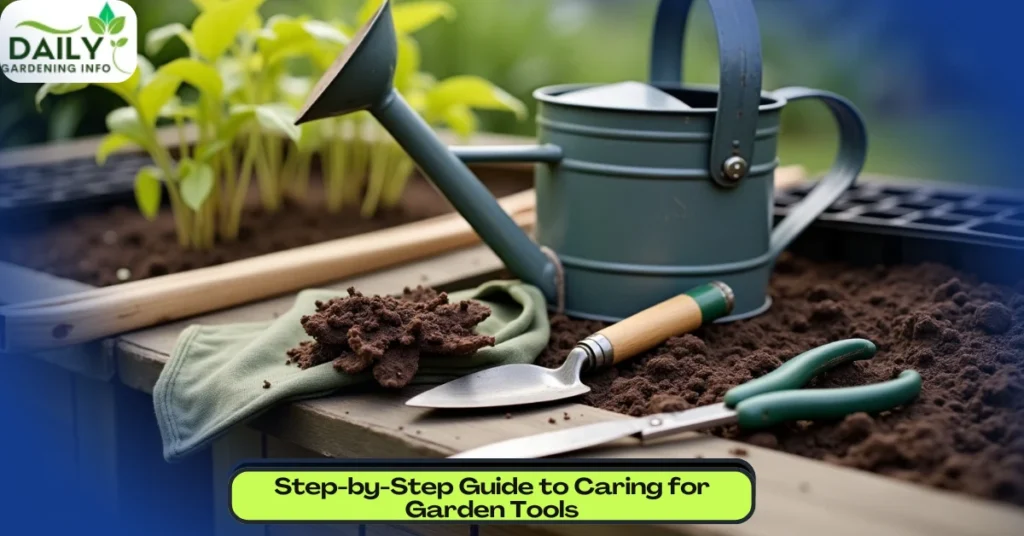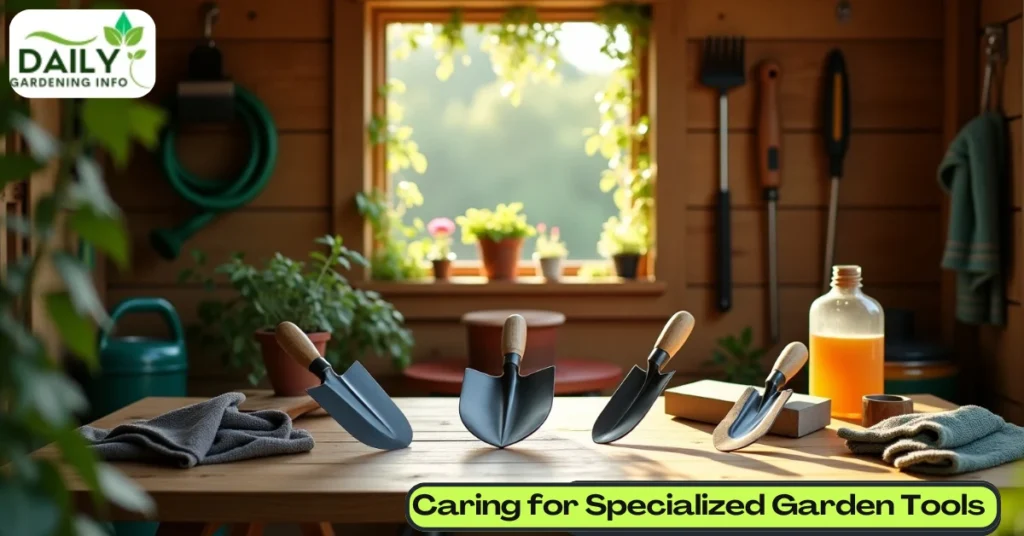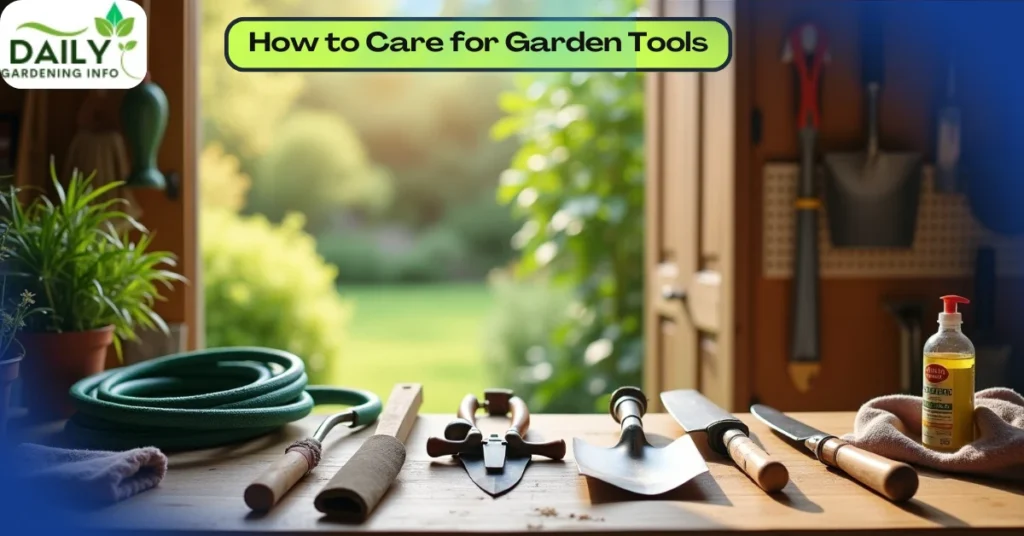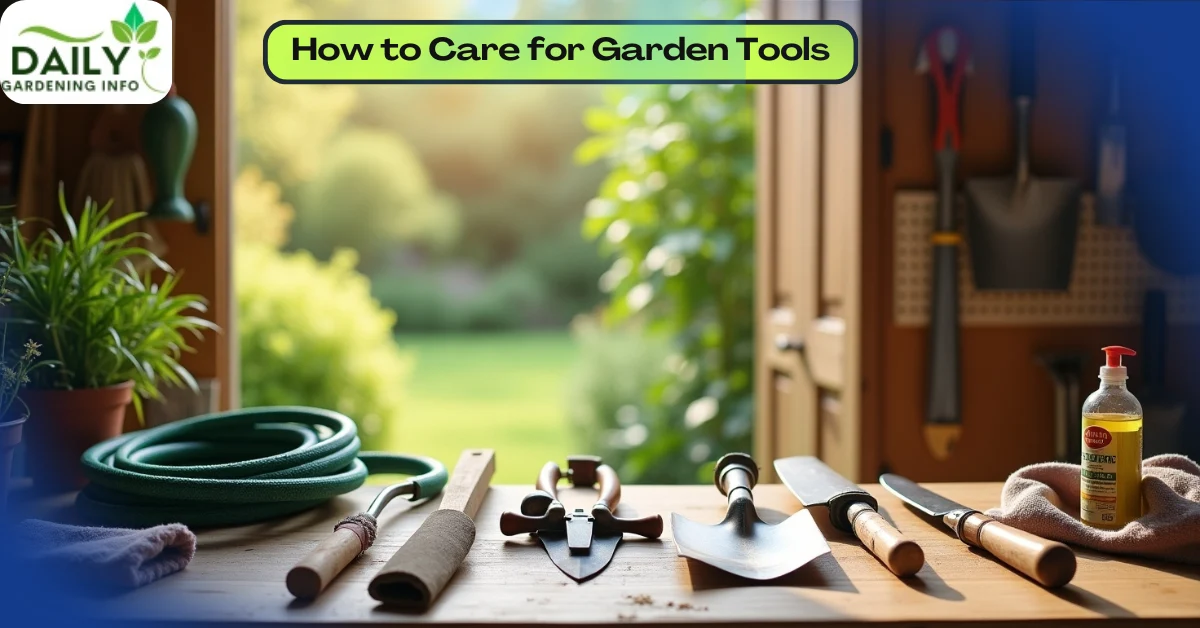Gardening is a labor of love, but your tools need love too in form of attention. Knowing how to care for garden tools keeps them sharp, rust-free, and ready for action for every gardening purpose. Neglected tools can ruin your plants, slow your progress, and cost you money in replacements.
In this comprehensive guide, we’ll cover everything from basic cleaning to advanced tips competitors often overlook—like disinfecting tools and eco-friendly maintenance—so you can master garden tool care and elevate your gardening game.
Why Proper Garden Tool Maintenance Is Essential
Your garden tools are not only an investment, but it is a time saver for you. Shovels, pruners, and hoes face dirt, moisture, and wear daily. Without proper garden tool maintenance, rust creeps in, blades dull, and handles crack. Caring for them not only extends their life but also ensures healthier plants free from spores and easier work. Let’s dive into how to care for garden tools with a step-by-step approach.
Step-by-Step Guide to Caring for Garden Tools
1. Clean Tools After Every Use
Dirt and sap are silent destroyers of gardening equipment. After each session, rinse tools with a hose to remove soil. For stubborn mud, use a wire brush or putty knife. Sticky sap? Wipe blades with a cloth soaked in rubbing alcohol or warm soapy water. Cleaning is the foundation of how to care for garden tools and prevents long-term damage.
2. Dry Thoroughly to Prevent Rust
Moisture is rust’s best friend. After washing, dry your garden tools with a towel or let them air out in the sun. Store them in a dry shed or garage—never leave them outside overnight. This simple step is critical to garden tool maintenance and keeps metal gleaming.
3. Sharpen Blades for Precision
Dull tools tear plants instead of cutting cleanly, stressing your garden. Use a whetstone, file, or sharpening tool to hone edges on pruners, shears, and shovels. Aim for a 20- to 30-degree angle and test sharpness on paper or softwood. Regular sharpening is a must-know in how to care for garden tools.
4. Oil Metal, and Wooden Parts
Rust-proof your tools with a thin layer of machine oil, WD-40, or linseed oil on metal surfaces and hinges. For wooden handles, rub in linseed oil to prevent drying and cracking. Oiling keeps parts moving smoothly and is a pro tip in garden tool care that’s easy to implement.
5. Store Tools Properly
Don’t toss your garden tools in a pile. Hang them on a pegboard or rack to keep them off damp floors. Use silica gel packs in storage areas to absorb moisture. Proper storage is a cornerstone of how to care for garden tools, especially during off-seasons.
6. Inspect and Repair Regularly
Check for loose screws, cracked handles, or bent blades. Tighten bolts with a screwdriver, sand rough wooden handles, or replace broken parts. Catching issues early ensures your gardening tools stay reliable.
Disinfecting Tools to Protect Plants
One critical step competitors often skip is disinfecting garden tools. Dirty tools can spread plant diseases like blight or fungus between beds. After pruning diseased plants, soak blades in a 10% bleach solution (1 part bleach to 9 parts water) for 30 seconds, then rinse and dry. Alternatively, use isopropyl alcohol wipes. This overlooked aspect of how to care for garden tools safeguards your garden’s health.

Caring for Specialized Garden Tools
Not all gardening equipment is the same. Here’s how to handle unique tools:
- Loppers and Hedge Shears: Disassemble hinges for deep cleaning and oiling.
- Trowels: Scrape off clay-heavy soil with a plastic scraper to avoid scratching.
- Garden Saws: Use a resin solvent to remove sap buildup on teeth.
- Wheelbarrows: Lubricate wheels and check for rust on metal frames.
Specialized care ensures every tool in your arsenal thrives, filling a gap in standard garden tool maintenance advice.

Seasonal Maintenance for Year-Round Performance
Adapt your garden tool care to the seasons:
- Spring: Sharpen and oil tools to kick off the growing season.
- Summer: Clean frequently due to daily use and humid weather.
- Fall: Deep clean, oil, and store tools for winter dormancy.
- Winter: Inspect for repairs indoors and sand wooden handles.
Seasonal habits make how to care for garden tools second nature.
Eco-Friendly Garden Tool Care Tips
Sustainability matters. Competitors rarely mention green alternatives, but you can:
- Clean with Vinegar: Swap harsh chemicals for white vinegar to remove rust.
- Use Biodegradable Oils: Opt for plant-based lubricants over petroleum products.
- Repurpose Old Tools: Turn broken handles into stakes or trellises.
Eco-friendly garden tool maintenance benefits both your tools and the planet.
Common Mistakes to Avoid
- Skipping Cleaning: Dirt invites rust and corrosion.
- Storing Wet Tools: Dampness ruins metal and wood.
- Ignoring Dull Blades: Blunt tools harm plants and strain your hands.
- Neglecting Disinfection: Disease spreads without proper sanitizing.
Steer clear of these errors to excel at how to care for garden tools.
Best Tools and Products for Garden Tool Care
Stock up on these essentials:
- Cleaning: Wire brush, putty knife, rubbing alcohol, vinegar.
- Sharpening: Whetstone, diamond file, or sharpening stone.
- Oiling: Linseed oil, WD-40, biodegradable lubricants.
- Storage: Pegboard, tool rack, silica gel packs.
- Disinfecting: Bleach solution, isopropyl alcohol wipes.
These supplies streamline garden tool care and keep your kit pristine.

How Often Should You Maintain Garden Tools?
- Daily: Clean and dry after use.
- Monthly: Sharpen blades and oil moving parts.
- Annually: Deep clean, inspect, and repair before storage.
Consistency is key to mastering how to care for garden tools.
Troubleshooting Common Tool Problems
- Rust Spots: Scrub with steel wool and vinegar, then oil.
- Sticky Hinges: Apply penetrating oil and work the joint loose.
- Splintered Handles: Sand smooth and seal with linseed oil.
- Bent Blades: Use a hammer and anvil to reshape (or replace if severe).
Quick fixes keep your gardening tools functional.
Starting fresh with your garden? Along with learning how to care for garden tools, don’t forget to check out how to start a garden in your backyard for a smooth gardening experience.
Conclusion
Mastering how to care for garden tools is about diligence and smart habits. Clean, dry, sharpen, oil, disinfect, and store your garden tools properly to enjoy years of reliable use. By addressing overlooked areas like disinfecting and eco-friendly care, you’ll outshine basic advice and keep your garden thriving. Start today—your tools will thank you with every dig and snip!

Leave a Reply